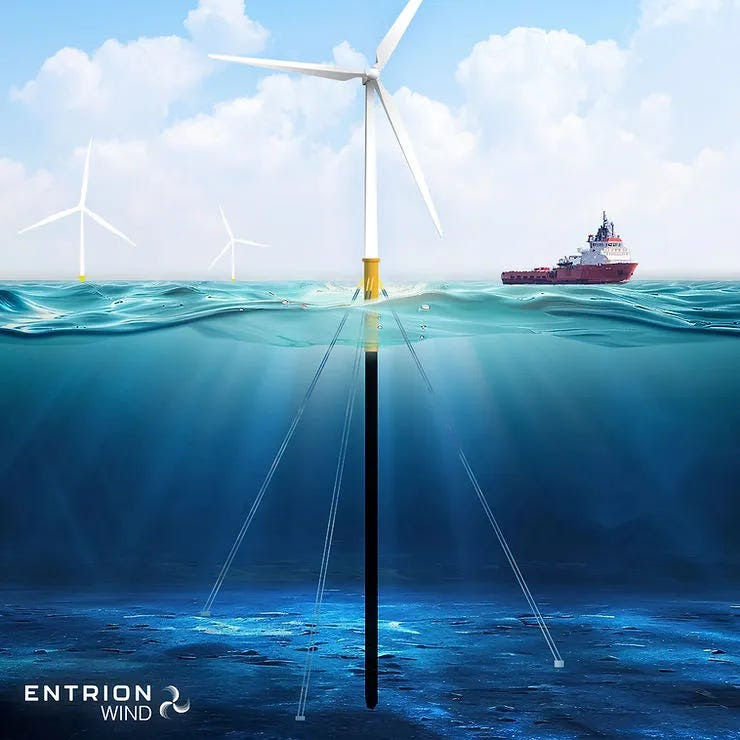Economic: The longer the monopile, the higher the CAPEX, and that investment needs to be supported by a tariff (or expected revenue from electricity sales).
Manufacturing: The main limiting factor would be the size, the plant’s load-bearing capacity, and the handling equipment required to move these giant components. It should be noted that monopiles usually go at least 25-30 meters into the seabed, giving us a total monopile length of up to 100 meters just with current depths.
Design: There are stiffness and stability challenges with monopiles of these lengths.
In order to overcome these challenges, Entrion Wind has patented a monopile design they’ve named the Fully Restrained Platform (FRP) monopile.

Entrion Wind’s design extends the maximum feasible depth for monopiles to 100 meters. It does so by adding several guy wires to the structure, improving the monopile’s stability and increasing its stiffness. It reminded me of Vestas’ guyed tower.
According to Entrion Wind, their design could make viable offshore projects that were previously only possible with floating structures. Commercial deployment is planned for 2027.
The potential to extend fixed-bottom wind to greater depths is spectacular. According to Aegir Insights’ calculations, just considering foundations that could reach 100 meters depth, 50 GW could be unlocked in the UK and Ireland alone.